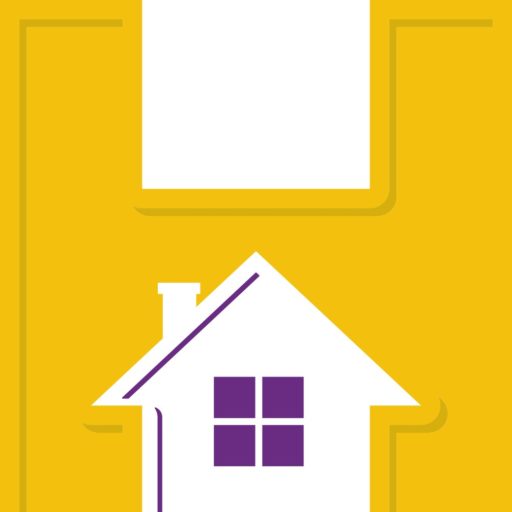How Can We Spread Domestic Violence Awareness?
As October draws to a close, there’s an opportunity for pause. Domestic Violence Awareness Month is nearly over, but the need for awareness is still here. Data from CDC’s National Intimate Partner and Sexual Violence Survey indicate that nearly 1 in 5 women and about 1 in 7 men report having experienced severe physical violence from an intimate partner in their lifetime, 1 in 6 women and 1 in 12 men have experienced crimes of sexual violence from a partner, and ten percent of women and two percent of men report having been stalked by an intimate partner. [1]
These statistics can be overwhelming, but awareness is a vital part of change. As we end Domestic Violence Awareness Month, here are some ways to embody awareness and make an impact on enacting change.
Know the Signs
Not all abuse is physical abuse, but knowing the warning signs of physical abuse is a huge part of DV awareness. Just knowing what to avoid can help you remain in safe and healthy relationships. It also helps you encourage the ones you love that they have someone on their side.

Some signs someone you know may be in a dangerous relationship may be:
- They have frequent and/or unexplained injuries
- They start to cover up more with long sleeves
- They become increasingly distant and/or depressed
- Extreme weight fluctuations
- They exhibit defensiveness and excuse-making
Some signs to help you recognize an abusive relationship before it gets dangerous are:
- Use of embarrassment, insults, and constant manipulative criticism
- Cheating
- Jealousy
- Dominating behavior
- Placing blame
- Isolation
- Financial control
- Threats of violent behavior
- Substance abuse (remember, it heightens abuse, but is not the cause of abuse)
Speak Up – But Softly
Remember that if you know someone who is in an abusive situation, it can be more harmful than helpful to try to convince them to leave. However, remaining a friend and being there for them when they need you can greatly help them heal. [2] Gently point out unhealthy behaviors. If you’re able to, start an open, encouraging conversation in a safe place. Keep the conversation understanding and compassionate, rather than preachy. Avoid defining the relationship as abusive. Keep the focus on how they feel about certain behaviors in the relationship, and allow the victim to speak their own truth on the situation. Gently encourage them to be honest with themselves and to understand that you care deeply about their well-being. [3]
There are many ways to get help if you are a victim of abuse. If someone you know asks you for advice, point them to resources like the National Domestic Violence Hotline (1-800-799-SAFE (7233) or their online chat. You can also help them create a safety plan that will allow them to have a course of action to take if they feel they are in danger. The Domestic Violence Hotline website has information on creating a safety plan.
Embody Healthy Relationships
Promoting healthy relationships starts with educating yourself on what a healthy relationship looks like. Modeling these kinds of relationships can strengthen others and encourage them to seek honest, respectful, and trusting relationships. Educating young people on what healthy relationships look like can also help. Education is power! If you have children or close relationships with young people, having conversations with them about what healthy relationships look like can be a great way to spread awareness. [3]

Wear Purple
Spreading the word about domestic violence can be as simple as being willing to have a conversation about it. Wearing purple for Domestic Violence Awareness Month can be a great conversation starter. Being open and honest with anyone who is curious about it can help contribute to the cause.
You can also get involved by donating to your local domestic violence shelters. These types of institutions are always in need of resources. Giving (volunteering, time, or money) is a great way to help out.
Even though Domestic Violence Awareness Month is drawing to a close, you can still be an agent for change!
If you’re interested in contributing to Safe Harbor’s efforts to help families become whole, happy, restored, there are many direct ways to get involved!
If you are concerned about yourself or a loved one, don’t be afraid to reach out for help. Though only a battered woman can decide if/when to take action, information and resources can go a long way.
Resources & support for anyone affected by DV and/or relationship abuse:
Call/Chat 24/7/365 | 1-800-799-7233 | 1-800-787-3224 (TTY) | Español Chat 12-6PM
Hotline advocates are available at 1-800-799-SAFE and through online chatting at www.TheHotline.org
References:
- https://www.cdc.gov/features/intimatepartnerviolence/index.html
- https://www.joinonelove.org/learn/help_a_friend/
- https://www.safy.org/domestic-violence-awareness-month-safy/
- thehotline.org/what-is-live-chat/
- https://www.thehotline.org/help/path-to-safety/
Safe Harbor articles linked in the article:
- https://safeharborim.com/recognizing-signs-of-abuse/
- https://safeharborim.com/how-to-recognize-an-abuser/
- https://safeharborim.com/how-to-get-help-if-you-are-a-victim-of-abuse/
Related articles:
Recognizing Signs of Abuse, How to Get Help if You are a Victim of Abuse, How to Recognize an Abuser, Why Therapy is Important for Trauma Survivors.
Written by Brooke Smoke, a blogger at Safe Harbor International Ministries


0 Comments